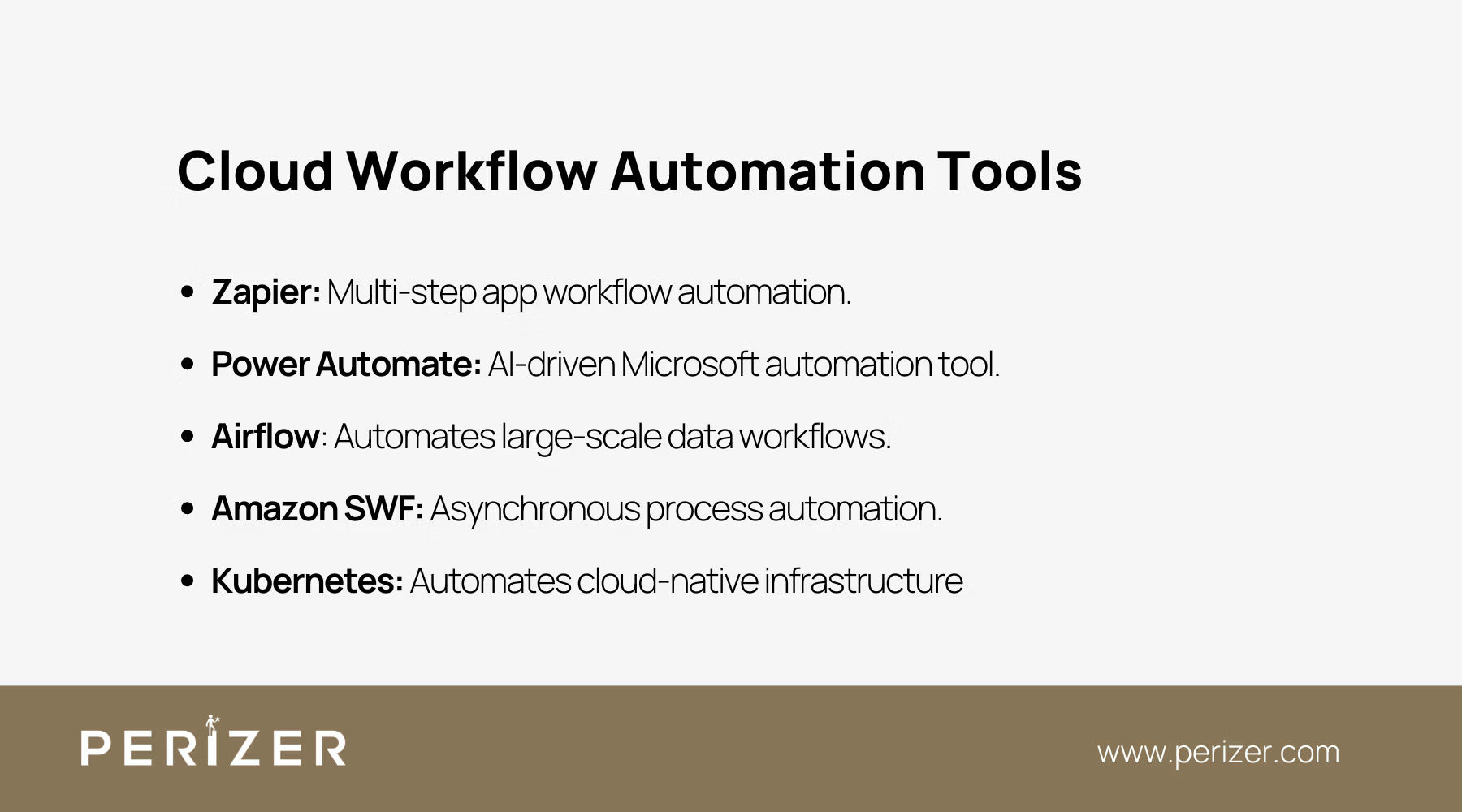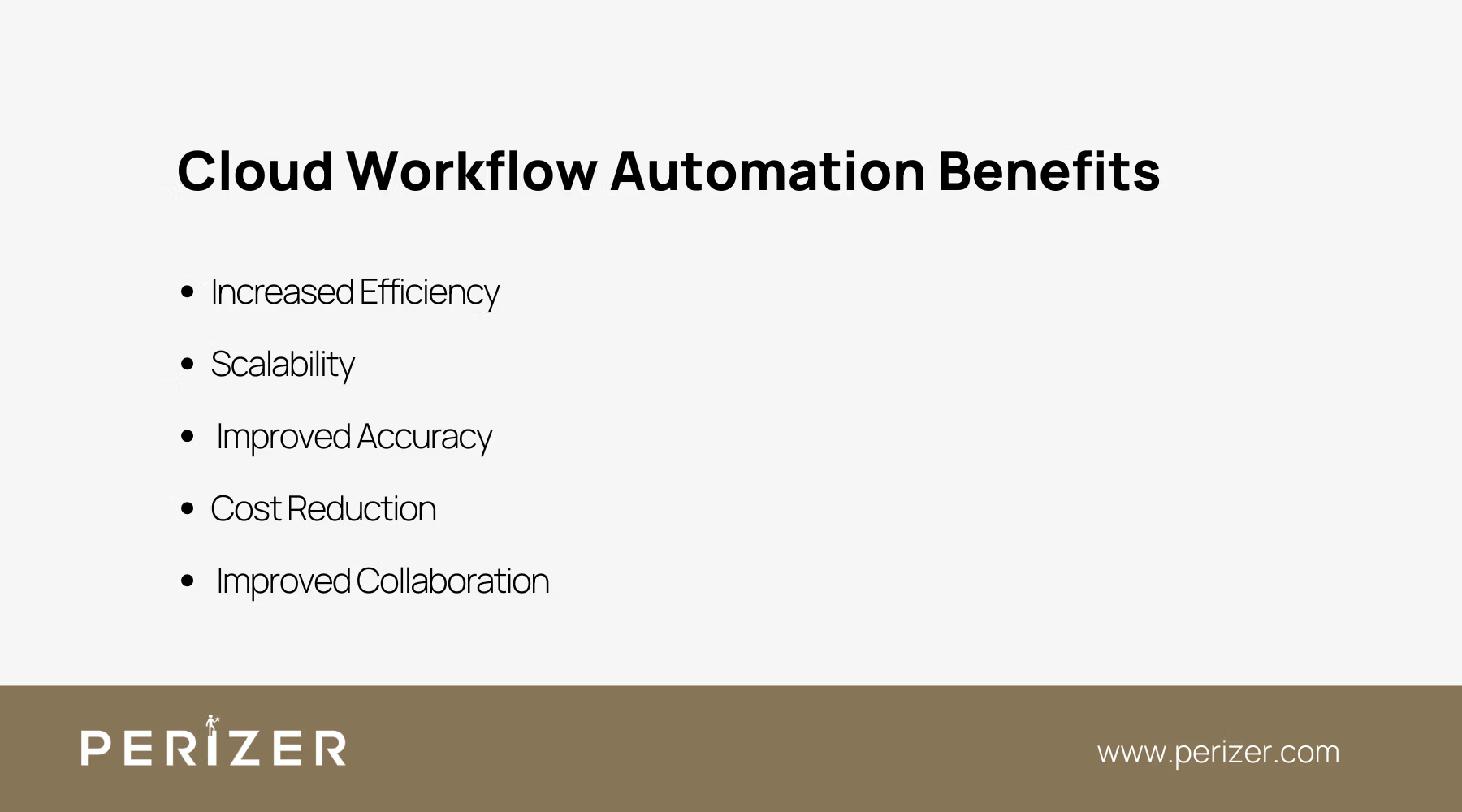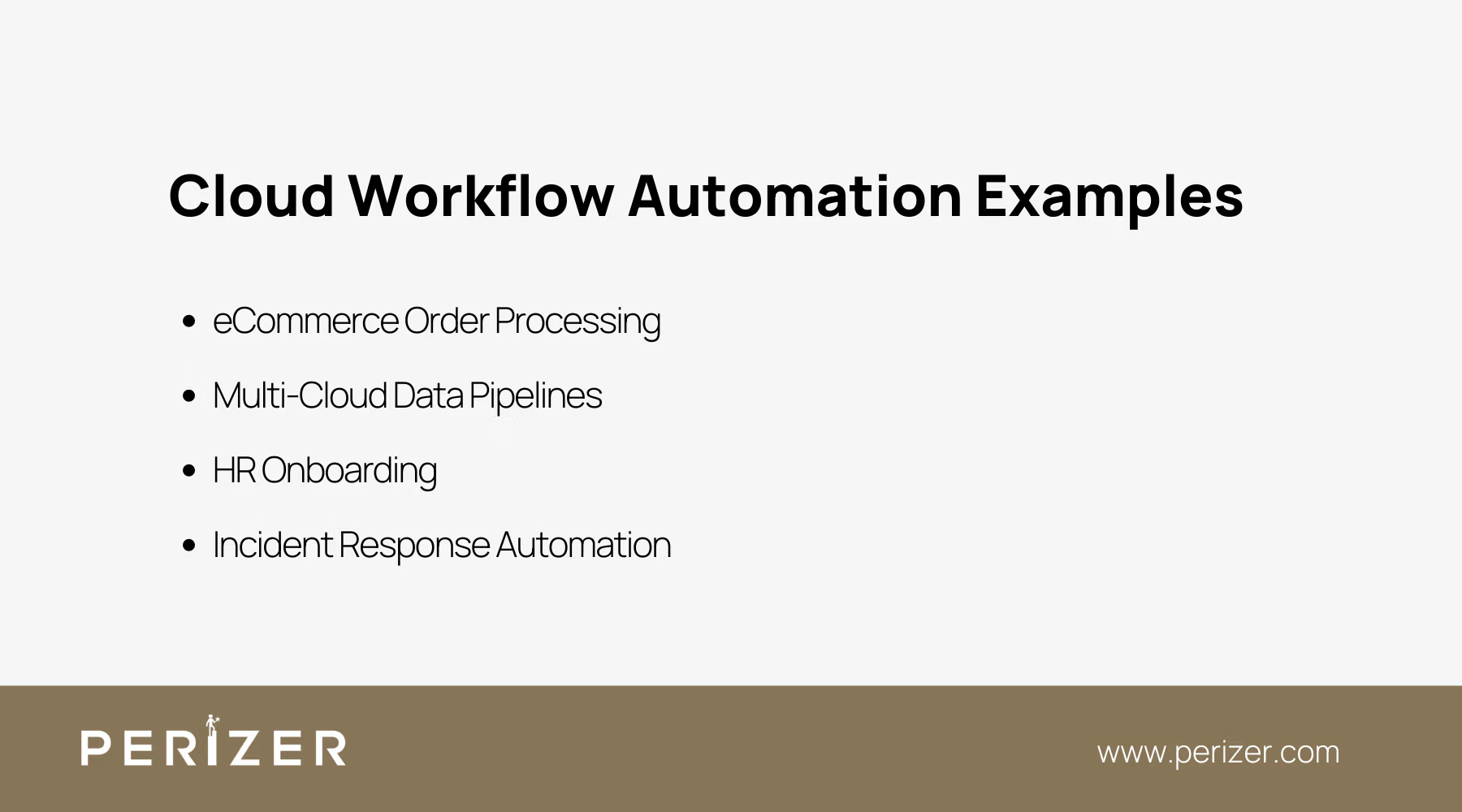Cloud Workflow Automation Tools, Benefits, & Examples
Explore advanced cloud workflow automation tools, their benefits, and real-world examples to streamline processes, improve efficiency, and reduce manual effort.

Companies that don’t adopt cloud workflow automation risk falling behind in both efficiency and scalability. Automation is an important step toward removing everyday challenges and making sure things run smoothly and accurately. By automating routine tasks, businesses can stay competitive in a fast-moving world.
According to Forrester's research businesses using cloud automation reduce manual errors by up to 60% and improve workflow efficiency by over 30%. By automating repetitive tasks, organizations free up valuable resources. This enables teams to focus on strategic initiatives that increase growth.
The Integration of these tools with top cloud platforms ensures a smooth transition and makes it easier to optimize workflows. Businesses can streamline operations without losing flexibility, adapting as needed. This seamless integration helps maintain efficiency while supporting growth and scalability
In this article, we’ll take a closer look at the top cloud workflow automation tools, discuss their benefits, and share real-world examples of how they improve business operations.
Cloud Workflow Automation
Cloud Workflow Automation refers to the process of automating business and IT workflows by using cloud-based tools and services. It involves setting up automated sequences of tasks or actions across different cloud platforms and applications without the need for manual intervention. The automation can span across processes such as data integration task coordination, file synchronization, and much more.
Cloud automation uses APIs, triggers, and conditional logic to ensure that each task in a workflow is executed efficiently and consistently. This reduces human errors, improves productivity, and allows teams to focus on more strategic work. The advanced users can design complex, multi-step workflows that integrate various cloud services, enabling seamless communication and data flow between them.
Moreover, by using cloud workflow automation, your organization can seamlessly scale operations and improve efficiency. It also helps create consistent processes while taking full advantage of the flexibility and power that the cloud offers.
Cloud Workflow Automation Tools

1. Zapier
Zapier lets you build multi-step workflows, called "Zaps," that connect your apps in powerful ways. For example, you can automatically send data from your CRM to your project management tool and notify your team on Slack without any manual work. With features like logic paths and conditional workflows, Zapier gives you more control than basic automation tools, helping you create smarter, more efficient processes.
2. Microsoft Power Automate
If your organization relies on Microsoft tools, Power Automate is a great option to consider. Its advanced workflows, powered by AI, can smartly predict the next best action in your process, making things run smoother. It works seamlessly with Azure, Dynamics 365, and even third-party apps, allowing you to automate complex tasks from start to finish. You can set up triggers, use dynamic content, and apply conditions based on real-time data, giving you full control over your workflows.
3. Apache Airflow
Apache Airflow is an open-source tool that is best for managing and automating workflows around big data. The Airflow ability to schedule and monitor workflows. It often involves large-scale data pipelines. If you're dealing with large datasets and need a strong way to automate ETL processes, Airflow allows you to coordinate these workflows smoothly.
4. Amazon SWF (Simple Workflow Service)
Amazon SWF provides full control over the coordination of asynchronous processes. This tool is designed to automate workflows that require human intervention at different stages. It’s especially useful for automating workflows in industries like finance, healthcare, and e-commerce where regulatory compliance and multi-step verification are critical.
5. Kubernetes
Kubernetes supports workflow automation for cloud-native applications. Kubernetes-native workflows can be automated to scale infrastructure on-demand, manage deployments, and even handle application updates without manual oversight. The automation here extends beyond app management to the infrastructure itself, allowing teams to focus more on innovation and less on operations.
Cloud Workflow Automation Benefits

1. Increased Efficiency
By automating repetitive tasks, you make more resources available. But more than that, cloud automation allows you to optimize workflows across teams, ensuring tasks are completed faster and with fewer errors. The ‘how’ here lies in creating a feedback loop where automated workflows not only execute processes but also report back on performance. This real-time data can be analyzed to further refine workflows, allowing for continuous improvement.
2. Scalability
Cloud-based automation tools scale effortlessly with your organization. As your team grows, or as you integrate more cloud platforms, the automation scales with it.
Automated workflows in cloud environments can handle an increasing volume of tasks without additional human input, meaning your operational capacity grows without scaling headcount.
3. Improved Accuracy
One of the core benefits of workflow automation is the reduction of human error. For example, if you're managing data transfers between systems manually, there’s a good chance that something will get missed.
Automated workflows ensure that every step is executed exactly as defined, without deviation. This is especially beneficial for compliance-heavy industries where even a small error can lead to big issues.
4. Cost Reduction
By reducing the time spent on manual processes and lowering the margin for error, automation directly impacts your bottom line. But the key to unlocking cost-saving potential is in optimizing your workflows.
Cloud workflow automation tools allow you to monitor cost-heavy processes in real-time and make data-driven adjustments to keep expenses in check.
5. Improved Collaboration
Cloud workflow automation connects different systems, enabling teams across departments or locations to work in unison. Let’s say your marketing team uses Hubspot, while your development team relies on
An automated workflow could pull data from one platform and update tasks in another, ensuring everyone is on the same page without the need for constant communication.
Cloud Workflow Automation Examples

1. eCommerce Order Processing
eCommerce platform handling thousands of transactions daily. The automation can ensure that orders are processed, invoices are generated, and tracking details are sent to customers all without human intervention. By integrating multiple cloud services like Shopify, and Slack, you can automate everything from stock updates to shipping confirmations, improving both speed and accuracy.
2. Multi-Cloud Data Pipelines
If you’re working with big data chances are your data pipeline spans across multiple cloud services. Apache Airflow can be used to automate data ingestion, cleaning, and analysis in a multi-cloud setup, pulling from various data lakes and databases. It transforms the data in immediately and delivers actionable insights to your analytics platform.
3. HR Onboarding
In large organizations, onboarding new employees is often a multi-step process involving various systems email, payroll, project management, and more. Cloud workflow automation tools like Power Automate or Zapier can ensure that once a new hire’s details are entered into the system, all other processes (email setup, permissions assignment, etc.) happen automatically. This removes the obstacles associated with manual data entry and system updates.
4. Incident Response Automation
In IT and cybersecurity, time is important. Automating incident response workflows in platforms like AWS or Azurecan drastically reduce response times. For example, if a security breach is detected, an automated workflow can isolate the compromised server, notify the security team, and generate a report immediately. It ensures that the damage is minimized.
Conclusion
Incorporating workflow automation tools can greatly improve efficiency, streamline processes, and reduce human error. By integrating tools like Zapier, Power Automate, and Kubernetes, you can automate repetitive tasks and scale operations without extra resources.
Additionally, cloud automation also improves accuracy and cuts costs, making it essential for staying competitive. Start by automating time-consuming tasks, and regularly optimize workflows to adapt to new technologies. Adopt automation is key to maintaining a competitive advantage in the current fast-moving business world.
FOCUSED, FAST, GOVERNMENT READY
Stay Tuned With Our Latest Insights

Staff Augmentation
Learn how to select the perfect IT outsourcing partner to promote your team’s capabilities, improve productivity, and drRead more...

Staff Augmentation
Find the perfect staff augmentation partner by aligning your goals, evaluating expertise, managing costs, and ensuring aRead more...

Cyber Security
We focus on understanding the needs, behaviors, and expectations of your users through extensive user research. This infRead more...